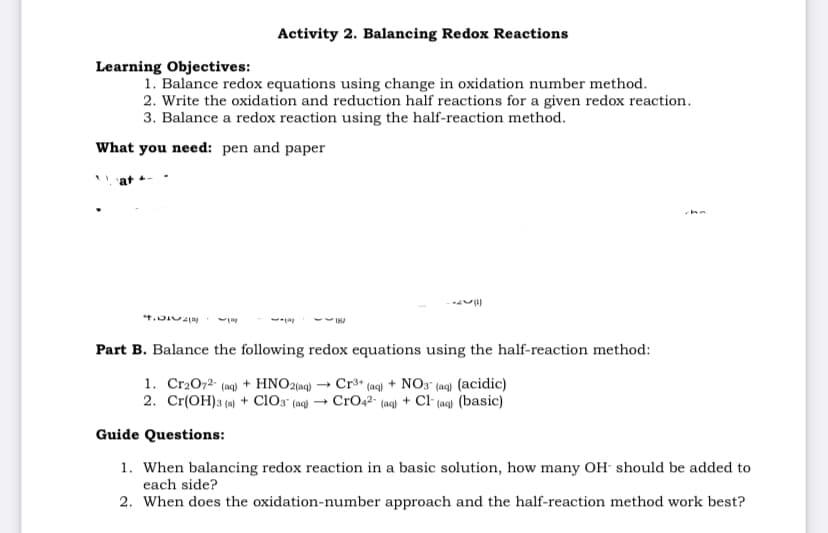Activity 2. Balancing Redox Reactions Learning Objectives: 1. Balance redox equations using change in oxidation number method. 2. Write the oxidation and reduction half reactions for a given redox reaction. 3. Balance a redox reaction using the half-reaction method. What you need: pen and paper Part B. Balance the following redox equations using the half-reaction method: 1. Cr20,2- (ag) + HNO2(aq) → Cr* (ac) + NO3 (ag) (acidic) Cro2- 2. Cr(OH)3 (s) + ClO3" (aq) - + Cl (aq) (basic) (aq)
Science behind corrosion-test
Corrosion is defined as an activity that transforms refined metals into more chemically stable forms such as oxide, hydroxide, carbonate, or sulfide. It refers to the slow decomposition of things (typically metals); thanks to chemical and/or electrochemical reactions with their surroundings. Corrosion engineering is the science of preventing and controlling corrosion.
Corrosion
Corrosion is defined as an activity that transforms refined metals into more chemically stable forms such as oxide, hydroxide, carbonate, or sulfide. It refers to the slow decomposition of things (typically metals); thanks to chemical and/or electrochemical reactions with their surroundings. Corrosion engineering is the science of preventing and controlling corrosion.

Trending now
This is a popular solution!
Step by step
Solved in 3 steps with 3 images









